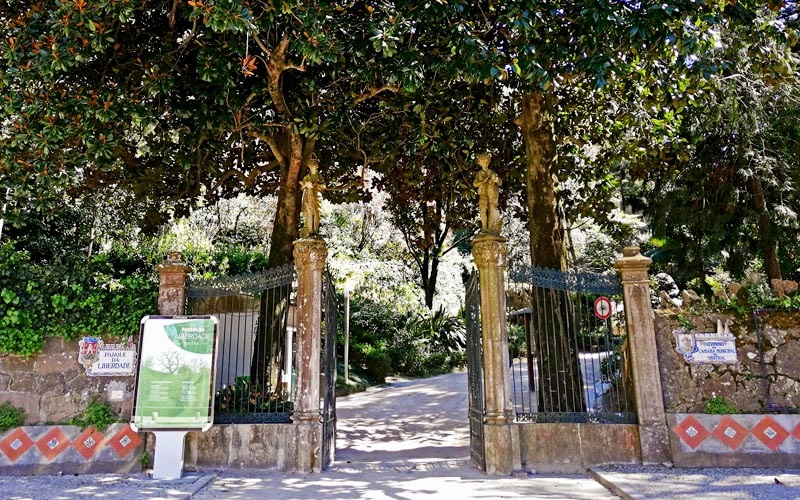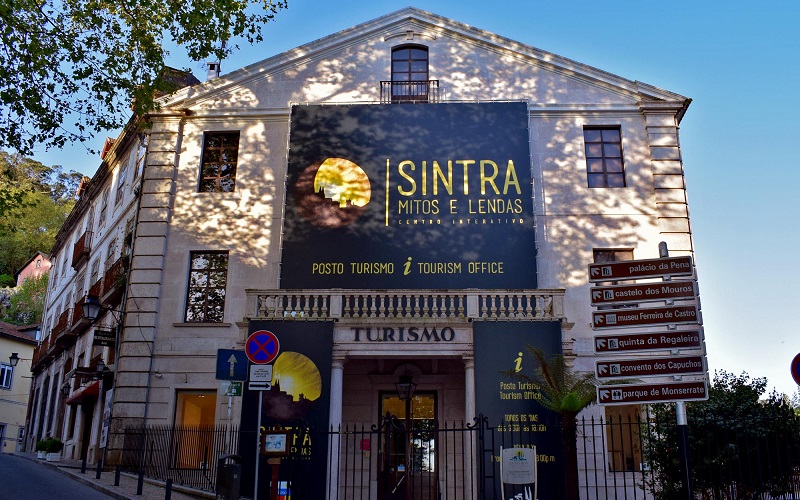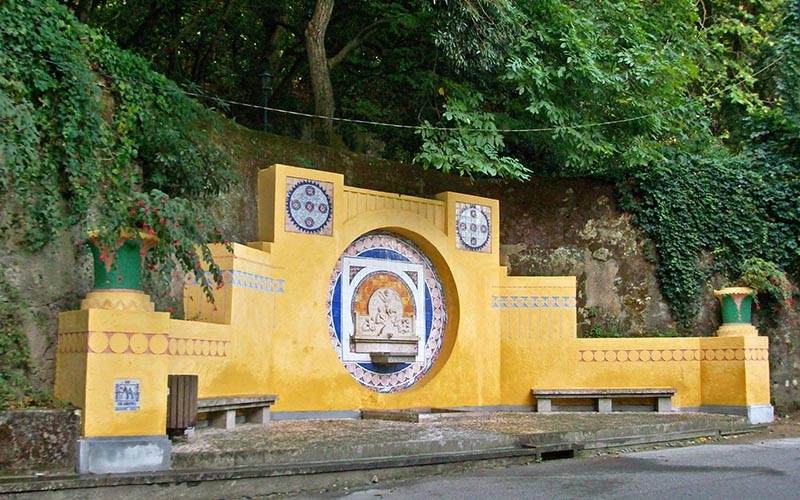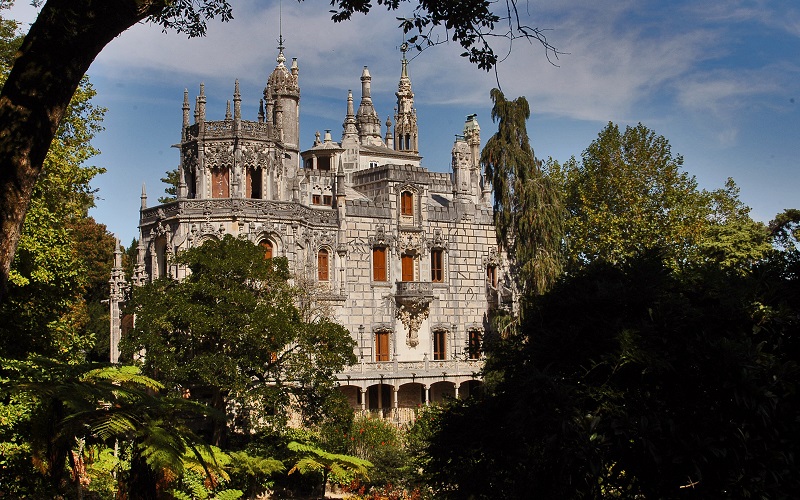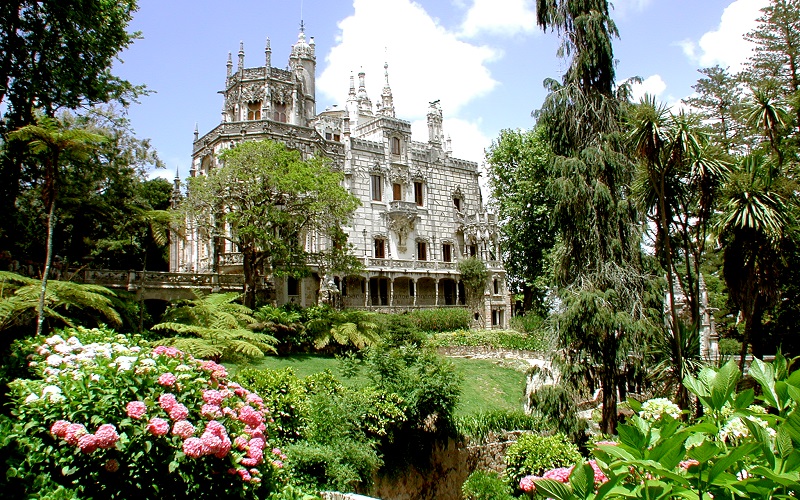
Arriving by train at the centennial Sintra Train Station, note not only the architecture of the building, but also the set of Portuguese azulejo tiles that adorn the walls.
Walk towards the historic centre where you can visit the cloisters of the current Sintra City Hall, built between the late 19th and early 20th centuries. The large crenelated tower is crowned by a tiled pyramidal crown topped by an armillary sphere.
Continue walking until you find the main entrance to Liberty Park (free admission) and make your way through this beautiful garden, with various species of trees and plants, to the Valença Palace atrium access gate, built in the middle of the second half of the 19th century and that fits the romantic current that proliferated in the Sintra Mountains.
Walk down the street and visit the News Museum, which pays tribute to journalists and shows media industry protagonists, addressing the evolution of media events coverage in recent history. The interactive museum enables visitors to interact with radio and television.
Stroll through in the historic centre and when tasting the famous travesseiros, a traditional sweet, you will find the Teixeira Arc on the left, signalling the passage to the Jewish Alley. Continuing up Rua das Padarias we come to Rua da Fonte da Pipa where, tucked away in a corner, we find the fountain that gives its name to the street.
Going down the Escadinhas Félix Nunes, you will find the Sintra Tourism Office on the left, where the Sintra Myths and Legends is also located. Near the Tourism Office is the St. Martinho Church, of Romanesque-Gothic origin built in the reign of King Afonso Henriques. The church’s viewpoint invites to a contemplative moment of the world heritage landscape of humanity.
After lunch at one of the local restaurants, follow the road towards Quinta da Regaleira. On the way, visit the Ferreira de Castro Museum, dedicated to the writer's work and life and then take a look at the Lawrence Hotel, established by the English Lawrence family in 1764, the oldest hotel in the Iberian Peninsula and where Lord Byron wrote the book “Childe Harold’s Pilgrimage”, in which Sintra is described as the «Glorious Eden». It also appears as a scenery in "Maias", from Eça de Queiroz. Other personalities from the Portuguese literary scene have also made their way through here: Ramalho Ortigão, Oliveira Martins and Camilo Castelo Branco, among others.
On the way to Quinta da Regaleira you will find Pisões Fountain, popular amongst locals and other inhabitants from around Sintra, as well as the beautiful waterfall with the same name. If you feel thirsty, enjoy the fountain’s drinking water.
Arriving at Quinta da Regaleira, take your time and explore one of the most beautiful monuments of the Sintra Mountains built between 1904 and 1910, in the last period of the monarchy, later bought and expanded by António Augusto Carvalho Monteiro (1848-1920) to create his own favourite place. Quinta da Regaleira became famous thanks to the Initiation Well and the fascination of crossing the property in underground tunnels. Be amazed by the beautiful gardens, lakes, bridges, the imposing palace and chapel, in a unique experience.
Return to the historic centre and walk to the Sintra Train Station, enjoying the natural beauty along the way.



